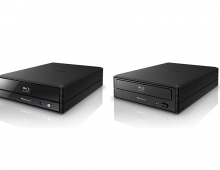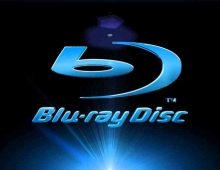
New Signal Quality Evaluation Method for 33.4GB/Layer BDs Unveiled
Sony and Panasonic have revealed a new data evaluation technique that could lead to Blu-ray discs holding up to 33.4GBs per layer for a total storage count of 66.8GBs.
A paper submitted at the International Symposium on Optical Memory 09 (ISOM 09) held last October in Nagasaki, Japan, described a new method of evaluating Blu-ray Disc media quality even at the higher capacity of 33.4 GB per layer. The new method is likely to accelerate development of discs offering even more storage space.
J. Shiraishi, S. Kobayashi (Sony Japan) and H. Miyashita, Y. Hino (Panasonic, Japan) developed a new signal evaluation method called i-MLSE (Maximum Likelihood Sequence Estimation) evaluation index. The method is considered as an apropriate one for the evaluation of the signal of a 33.4 GB BD-R disc, which is using the partial response maximum likelihood (PRML) signal processing method. The nature of the PRML method, which assumes inter-symbol interference, has made it difficult to rely in jitter measurements for the evaluation of the quality of a BD-R disc.
The two key characteristics of the i-MLSE is that is shows a strong correlation with the Symbol Error Rate (SER), in read/write at 33.4 GB using PRML. The SER value indicates the reported when a BD-R disc is read, meaning that it is a sazfe way to evaluate the quality of a recorded BD-R disc. As the Tech-On web site indicates, "i-MLSE exhibits the same relationship to signal quality as conventional jitter." In other words, it will be relatively simple to estimate the read error rate from the i-MLSE, just as can be done now with jitter.
i-MLSE continue to use the existing Blu-ray optics: a blue-violet laser diode with a 405 nm wavelength, and an object lens with a numeric aperture (NA) of 0.85. However, the report notes that processing hardware within certain Blu-ray drives may need to be tweaked as the improvements associated with i-MLSE are reliant on boosted performance in real time.
i-MLSE could allow both Blu-ray readers and burners to deal with up to a third more capacity, while Hollywood distributors could pack their releases with longer movies and more related content.
Although neither submitted to nor approved by the official Blu-ray Disc Association, Sony is expected to formally table i-MLSE for possible inclusion to the existing Blu-ray standard.
Many other optical storage technologies have been also presented at ISOM 09. was given to Takashi Nishihara, Akio Tsuchino, Yuko Tomekawa, Hideo Kusada, Rie Kojima, Noboru Yamada (Panasonic, Japan) for their paper entitled "First Proposal of 100 GB Rewritable Triple-layer Optical Disk using a GeTe-rich GeSbTe Film and a New Dielectric Film with a High Refractive Index". According to the paper, the recording-capacity of 33.4GB/layer and the triple-layer structure of a disc were enabled by a high-contrast GeSbTe film and a TiO2-based film, respectively. A sufficiently low SER,
The 'Best Technical Paper Award' had been received by Nobuki Yamaoka, Shigenori Murakami, Yukihiro Sugawara, Seiro Ohshima, Toshihiko Takishita, Fumihiko Yokogawa (Pioneer, Japan) for their work on the "Thermal Recording for 200GB SIL Disc Mastering". The authors chose a dielectric as the recording material of the thermal recording. They confirmed that 200GB density data could be recorded with this material. The recorded pit shape was sharp enough to allow for read and write procedures, according to the scientists.
Panasonic also proposed a new adaptive write strategy to obtain high quality signal for recording density of 33.4GB/layer onto high transparent recording layer, and realized a 100GB capacity of a rewritable triple-layer disc.
J. Shiraishi, S. Kobayashi (Sony Japan) and H. Miyashita, Y. Hino (Panasonic, Japan) developed a new signal evaluation method called i-MLSE (Maximum Likelihood Sequence Estimation) evaluation index. The method is considered as an apropriate one for the evaluation of the signal of a 33.4 GB BD-R disc, which is using the partial response maximum likelihood (PRML) signal processing method. The nature of the PRML method, which assumes inter-symbol interference, has made it difficult to rely in jitter measurements for the evaluation of the quality of a BD-R disc.
The two key characteristics of the i-MLSE is that is shows a strong correlation with the Symbol Error Rate (SER), in read/write at 33.4 GB using PRML. The SER value indicates the reported when a BD-R disc is read, meaning that it is a sazfe way to evaluate the quality of a recorded BD-R disc. As the Tech-On web site indicates, "i-MLSE exhibits the same relationship to signal quality as conventional jitter." In other words, it will be relatively simple to estimate the read error rate from the i-MLSE, just as can be done now with jitter.
i-MLSE continue to use the existing Blu-ray optics: a blue-violet laser diode with a 405 nm wavelength, and an object lens with a numeric aperture (NA) of 0.85. However, the report notes that processing hardware within certain Blu-ray drives may need to be tweaked as the improvements associated with i-MLSE are reliant on boosted performance in real time.
i-MLSE could allow both Blu-ray readers and burners to deal with up to a third more capacity, while Hollywood distributors could pack their releases with longer movies and more related content.
Although neither submitted to nor approved by the official Blu-ray Disc Association, Sony is expected to formally table i-MLSE for possible inclusion to the existing Blu-ray standard.
Many other optical storage technologies have been also presented at ISOM 09. was given to Takashi Nishihara, Akio Tsuchino, Yuko Tomekawa, Hideo Kusada, Rie Kojima, Noboru Yamada (Panasonic, Japan) for their paper entitled "First Proposal of 100 GB Rewritable Triple-layer Optical Disk using a GeTe-rich GeSbTe Film and a New Dielectric Film with a High Refractive Index". According to the paper, the recording-capacity of 33.4GB/layer and the triple-layer structure of a disc were enabled by a high-contrast GeSbTe film and a TiO2-based film, respectively. A sufficiently low SER,
The 'Best Technical Paper Award' had been received by Nobuki Yamaoka, Shigenori Murakami, Yukihiro Sugawara, Seiro Ohshima, Toshihiko Takishita, Fumihiko Yokogawa (Pioneer, Japan) for their work on the "Thermal Recording for 200GB SIL Disc Mastering". The authors chose a dielectric as the recording material of the thermal recording. They confirmed that 200GB density data could be recorded with this material. The recorded pit shape was sharp enough to allow for read and write procedures, according to the scientists.
Panasonic also proposed a new adaptive write strategy to obtain high quality signal for recording density of 33.4GB/layer onto high transparent recording layer, and realized a 100GB capacity of a rewritable triple-layer disc.





















